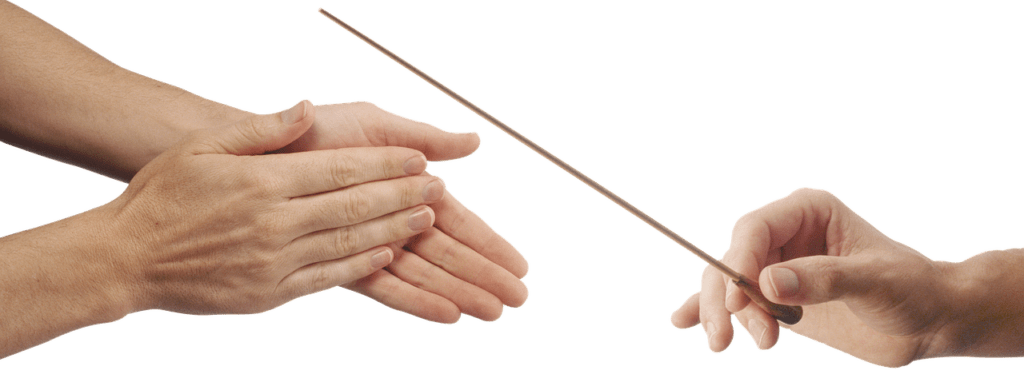Estimated reading time 2 minutes
Table of Contents
What’s a Good Alternative to a Metronome for Lessons and Practice Sessions?
Teachers, do you have students who can’t use a metronome and can’t keep a steady beat? We all know how valuable metronome practice can be. However, it can be tricky for students to sync with a metronome, and many students flat out refuse to work with them. Read more to answer the question, “What’s a good alternative to a metronome for practice sessions?”
It can’t be overstated. The steady beat is one of the most important skills for a student to master:
- Nothing will make a student sound like a pro faster than keeping a steady beat.
- Likewise, nothing will make a student sound like an amateur faster than a choppy beat.
- However, many students (at least the young ones and even many of the adults) can’t handle metronome work.
Whether you’re a teacher in lessons or a parent helping your child with practicing, try this tip for working on the steady beat. (I even have some advice for adults who have a hard time working with a metronome.)
This post uses musical terms. For definitions, see the Glossary at the end of the article.

The “Flexible Metronome” as a Good Alternative to a Metronome for Practice Sessions
“What’s a good alternative to a metronome for practice sessions?” My solution… use a pointer:
- It allows me (the teacher) to be a “flexible metronome.”
- That way the student can work on the steady beat without getting frustrated.
- Also, it keeps students from losing their place in the score.
For adults who struggle with rhythm, you might want to find a teacher who can be the flexible metronome for you.
How does it work for practicing and in lessons?
Point at the notes in time as the students play:
- Start by trying to get them to play with a steady beat through each measure.
- Next, try to get them to play with a solid pulse through the whole line.
- Then, work on the whole section (or page).
- Finally, go through the whole song with a steady beat.
This may take more than one lesson.
Where can I get a pointer?
I remember going into an office supply store to see if I could buy a pointer. They had laser pointers, and I remember saying, “No, I need to be able to tap on the page!”
So, I built my own pointer:
- First, I went to an art supply store and bought a dowel (about pencil thickness).
- Then, I sawed it in half.
- Next, I put one end in the pencil sharpener.
- Lastly, I finished by sanding the pointy end.
Alternate pointers:
- You can use a pencil in a pinch, but it’ll kill your back in the long run.
- A conductor’s baton could work too.
I’ve been using pointers for over 20 years now, and many students have said it helped them when I pointed at the score as they played.

Final Thoughts on “What’s a Good Alternative to a Metronome for Practice Sessions?”
“What’s a good alternative to a metronome for lessons and practice sessions?” You are the good alternative.
- With your help and support, your students can develop the steady beat.
- Once the steady beat emerges, you can then teach them how to use a metronome.
- At that point, they won’t feel like they need to avoid the metronome anymore.
If your student has learning difficulties beyond just the steady beat, you can also color code the notes and rhythms:
- How to Color Code Music Notes
- Color Coded Quarter Note Clapping
- Playing the Piano with Color Coded Notes
- How to Color Code Guitar Tab
© 2023 Geoffrey Keith
Join me for in-person or online lessons today!
Back to the All-Purpose Music Tips and Topics category blogs page
Glossary
What Are Some Signs of a Twice Exceptional (2E) Child?
“What are some signs of a twice exceptional (2E) child?” Children with both giftedness and learning disabilities are called twice exceptional. In other words, twice exceptional children will pick up some things really quickly - much more quickly than typical learners. However, with other things they will lag way behind their typical learner peers – sometime by a significant amount. Read more to learn the signs of a twice exceptional child. Estimated reading time 4 minutes.
Read MoreSight Singing with Rhythmic Syllables
Do you wish you could read rhythm better? “Sight Singing with Rhythmic Syllables” looks at rhythm. Also, we have sung so far in the keys of C, Db, D, Eb, E, F, Gb, and G major. In today’s singing lesson you will learn the keys of Ab, A, Bb, and B. Once again, the more keys you know, the better your reading will become. Estimated reading time 4 minutes.
Read MoreJoy to the World – A Heavenly Song of Celebration
Do you want to know the words to Joy to the World? Would you like to learn how to sing or play it? In this post, you’ll get the essentials: 1) all the words to the song, 2) two videos (one for the song itself and one for easy piano), and 3) easy-to-read shape note sheet music with a sing along song track. Keep reading Joy to the World - A Heavenly Song of Celebration to learn more. Estimated reading time 2 minutes.
Read MoreEnjoy the Bold Song: Battle Hymn of the Republic
Do you want to enjoy the bold song “Battle Hymn of the Republic?” In this article, you’ll get three essentials: 1) a video of the song, 2) the complete words to the song, and 3) free easy-to-read lead sheet style sheet music using shape notes, including a sing along soundtrack. Keep reading to learn more. Estimated reading time 2 minutes.
Read More




